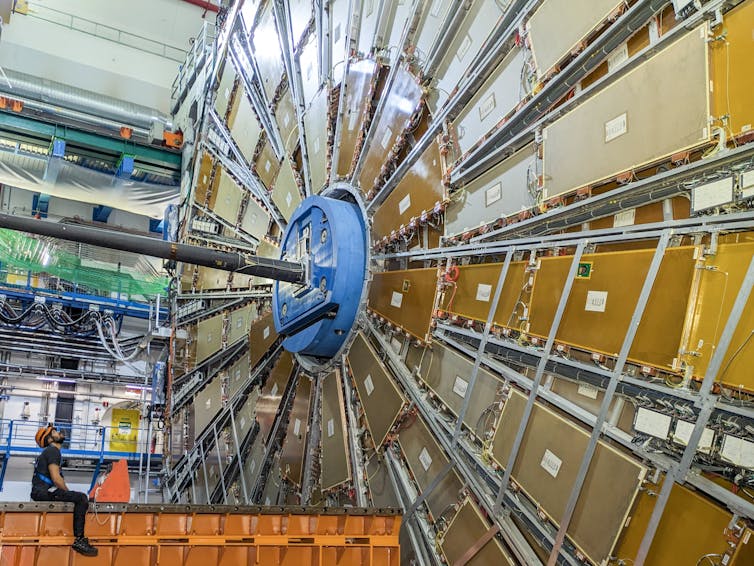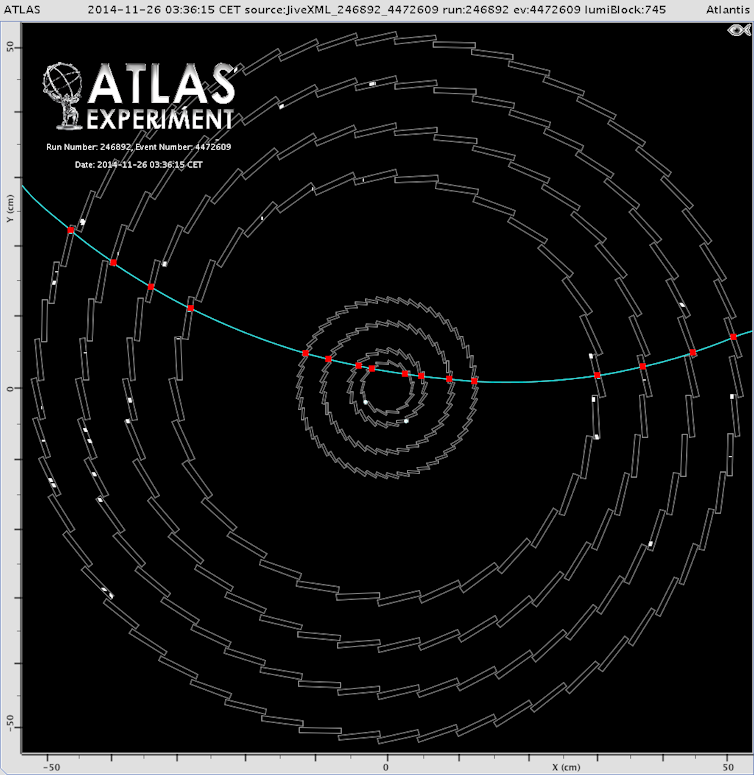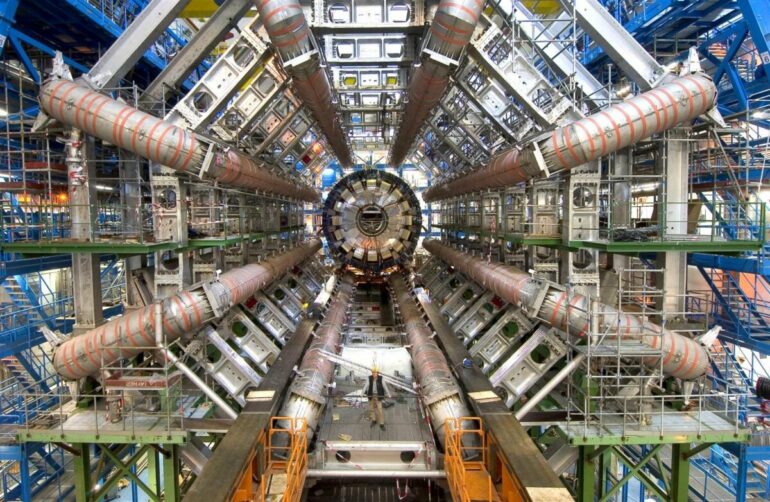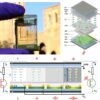When you push “start” on your microwave or computer, the device flips right on – but major physics experiments like the Large Hadron Collider at the European Organization for Nuclear Research, known as CERN, don’t work that way. Instead, engineers and physicists need to take a few weeks every year to carefully reset the collider and all the experiments on it.
I’m a CERN physicist who worked with my colleagues in the past few months on the reset process of the largest of the experiments, ATLAS. To collect accurate data about particle collisions and study some of the universe’s most compelling mysteries, the collaboration needs to make sure the equipment is calibrated properly.
At CERN, the Large Hadron Collider, or LHC, smashes protons at the highest energy ever reached to create new particles, which physicists then catch and study with several experiments.

One side of the ATLAS detector. The technician on the left faces one of the wheels of the muon chambers – sensors to detect and measure muons.
Ana Peixoto, the ATLAS Experiment at CERN
The LHC explores the hidden world of subatomic particles, the fundamental building blocks of everything around us. Studying these particles helps scientists like me better understand how the universe works and evolves over time.
Hibernating and waking up the LHC
Each winter, the collider and its experiments hibernate. My and other teams at CERN push them to take this winter nap for a few reasons.
The machines we use here are complex. We need some time to replace pieces or install new components. And, given that all those machines use a lot of power, we avoid running them in winter, when electricity costs more and when nearby Geneva needs to keep its residents warm.
But when spring comes, all the teams prepare the LHC and the experiments for a new season of data gathering.
While engineers and technicians work to reset the accelerator and prepare it to smash protons, my colleagues and I, the experimental physicists, prepare the experiments to promptly and correctly collect data from all the particles produced by the collider.
Testing with cosmic rays
The experiments’ teams start the first phase of waking up the LHC from hibernation while the accelerator is still asleep. We need to start testing the particle detectors even while the collider that creates the particles isn’t working.
In this first phase, we use what’s always available, provided by nature itself – cosmic rays. These are subatomic particles created when energetic particles from space hit atoms high in the atmosphere.

A cosmic ray travels through the particle detectors and their layers of sensors, leaving physicists with test data.
The ATLAS Experiment at CERN
A cosmic ray enters the ATLAS detector in the LHC on the left. Each time it strikes a sensor, the ray loses some of its energy, which the detector converts into a signal and…



